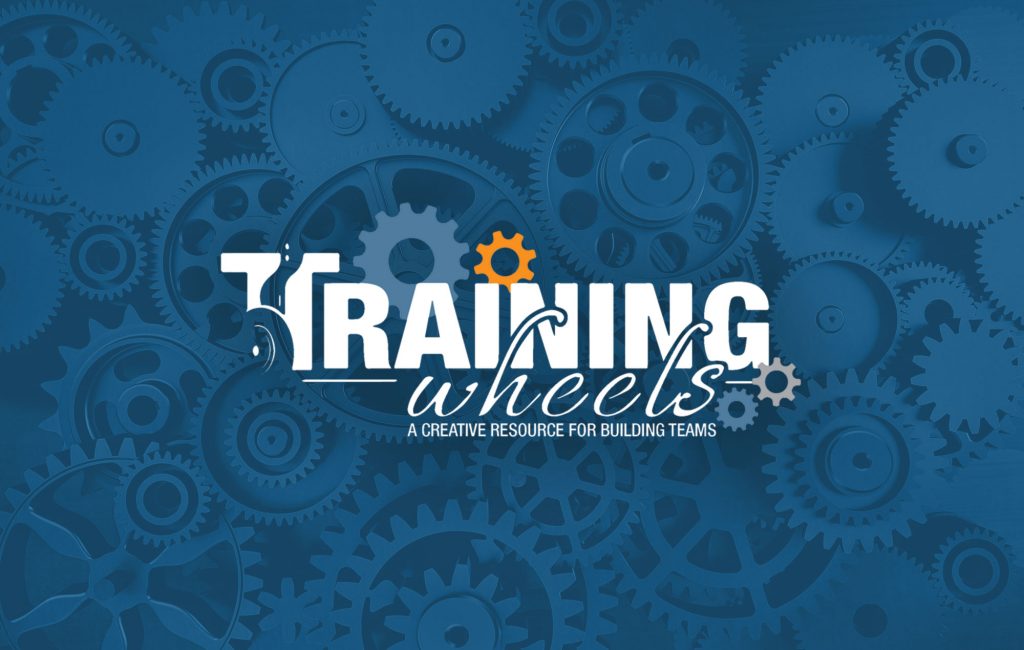
Concept: This physics phenomenon will have your participants talking about the ‘Buzz Words’ of team work in a unique way.
Type of Activity: Problem Solving, Processing
Props Needed: One Buzz Ring
Group Size: Maximum of 15 people per ring.
Process: To begin this activity, identify what the “buzz” words are that may come up in the program. For example, your group may come up with the words: communication, respect, positive language, trust, and teamwork.
Explain to the group that it takes a lot of effort to keep Communication, Respect, Positive Language, Trust and Teamwork working together synonymously. Like most group work, it takes time and practice to master a new skill. Explain to the group that you are going to start the buzz ring and give them a task that is quite difficult to accomplish. Explain that you are not certain if they will be able to successfully complete the activity but would like to see how they do. Then start up your buzz ring.
The object is to pass the buzz ring around the circle without stopping any of the rings from buzzing. As previously stated, this is a difficult task and the majority of groups will not be successful their first attempt.
While the group is passing the ring around, you can talk about the buzz words and what they will encounter throughout your program.
If someone in the group makes the rings stop process it immediately. This person is feeling some embarrassment, disappointment, stress and may feel that they have let the group down. First encourage them to get the rings going again. If they are unsuccessful ask the group the following questions: “Has anyone ever done this before? Is it acceptable to the group that we do not have to be perfect the first time we attempt new tasks? How many people hoped that someone else would be the first to stop the rings before it was their turn?”
At this point you can have group set goals based on the number of mistakes they want to allow in one pass of the ring. Then help the group get the rings going again.
Verbal encouragement from the facilitator helps in the group success. Encouraging statements like, “It’s a simple hand over hand motion. Communicate with the person next to you when you are ready to release the buzz ring into their possession.”
Encourage the group to celebrate after the ring makes it all the way around the group.
Debriefing Topics: There are several things to bring up as your process this activity.
Debriefing Questions:
Sequencing: The Buzz Ring can be implemented many different ways. Here are suggestions:
Use the Buzz Ring as a stand alone activity
The Buzz Ring activity works well as a stand alone activity for many reasons. Because the Buzz Ring is such a unique ‘tool’ participants often ‘buy-in’ quickly due to the ‘coolness factor’ of what it physically does. Multiple learning styles are utilized; auditory, visual and kinesthetic, so right away you have engaged a large percentage of your audience.
Start and end the training with the Buzz Ring
Sequencing the Buzz Ring at the beginning of a program can set the tone for what you want to accomplish with the group. Giving them a task that is difficult to achieve, allows them to think metaphorically, creates some performance anxiety, and has the potential to push them outside their comfort zone is a wonderful first step when talking about the hard topic of conflict. Dealing with conflict is critical to successful teams and people and often take a step by step approach to resolve. Being successful at the Buzz Ring activity is also a step by step sequence. Often times we are not 100% successful at our attempts. The sequence of starting the program with the Buzz Ring allows the group to have the initial experience with the ring itself.
Ending the program with the Buzz Ring allows the group to have other experiences during the day of working together, effective communication, and more conversation about how to deal with conflict and each other. The more practice we have at resolving conflict and working together the better we will be at it. Experience has shown that groups that end the program with the Buzz Ring have a higher success rate at completing the task with little to no errors. You will be amazed at how well groups do with this.
Debrief the day: Pass the Buzz
Using the Buzz Ring as a wrap-up at the end of a training or workshop can be an effective way to encourage participants to ‘Pass the Buzz’ about what they learned.
At the end of the training, invite participants to form a circle. Present the Buzz Ring and start it buzzing. Then ask: How do we keep the buzz going from this workshop? While keeping the Buzz Ring in motion, model a response by saying, “I learned more about the conflict styles of my co-workers. I’m going to use this knowledge to approach individuals differently if I have conflict with them. (or whatever else may be appropriate from the workshop content). Then pass the buzz ring to the next person in the circle.
When the next person gets the ring, he/she states what he/she will take from the workshop and passes the buzz ring to the next person. This pattern continues around the circle until the ring gets back to the facilitator.
If the ring stops buzzing as it goes around the circle, the person has to restart the buzz and mentions what might be an obstacle that could stop the buzz. After sharing this they proceed with the initial question.
The fascination with the buzz ring combined with the reflection helps participants leave with a smile and an action plan.
Getting the Buzz Ring Started: Getting the rings to start can be tricky and practicing ahead of time is a must. There are multiple ways to start the rings so finding your ‘style’ just takes some practice time to figure out which system works best for you. Some place their palm down on the still rings and give them a good spin. By turning the large ring at the same time the rings start buzzing. Others will slap straight down at the rings and turn the large ring at the same time to get them buzzing. Practice to see which method works best for you.
Here are some basic instructions:
What are the physics behind the Buzz Ring? or How does the Buzz Ring Work?
The Buzz Ring is really just five little washers of unusual design strung on a metal ring. Do you remember how tops appear to start “wobbling” as they slow down? This rotation of the spin axis is called precession and causes the ring to press on one side of the hole in the spinning top. The contact point between the ring and the top can be thought of as a gear that changes the motion of the upward moving ring into the top’s spinning motion.
Testimonials
“I love the Buzz Rings! The kids I work with LOVE the Buzz Rings! At the training where I learned about them, we talked about this being an activity that engages even those “too cool” kids and I have definitely found this to be true! I have used the Buzz Rings to talk about fears, esp. fear of failure, multi-tasking, and yes those ever present “buzz words.” This is a must-have easy to use prop for your adventure programs!” Lisa Berkland, ISU Extension – 4-H Youth Development Field Specialist
“I use my buzz ring with my adult groups when teaching clear and concise instructions. Depending on group size I either have them in a circle and tell them I am their new boss and I have a project for them, I then hand the buzz ring to one of the participants and say; “ make the washers on the ring vibrate and have it go around the circle.” I then tell them I have “left” the building so am not available for any questions. After a bit of not knowing what is going on and not being able to figure it out, I give them a “POOR” performance evaluation for not doing the job correctly. They of course feel slighted because my instructions where vague and ambiguous. We then debrief the importance of giving our employees clear and concise instructions for what we want done. I then demonstrate what it looks like to make the washers vibrate and how to hand it from person to person. You are then able to teach, coaching, counseling, problem solving, team work and so on. It’s the best!” ~Ned Parks, New Directions Learning & Development

Founder / Facilitator / Big Wheel of Training Wheels